
Background information
From Metal Gear to Death Stranding – how legendary developer Hideo Kojima got so popular
by Cassie Mammone

«Xenogears» could just as well have been called «Final Fantasy VII» or «Chrono Cross». The game was released in 1998, Squaresoft’s golden age, and is still my favourite JRPG – although it isn’t really finished.
In the «Remember?» series, members of our editorial team recall past gaming gems.
From «Final Fantasy 7» through «Parasite Eve» and «Chrono Cross» to «Final Fantasy 10» – between 1997 and 2001, Squaresoft – now Square Enix – released some brilliant games. According to many, a golden age in the studio’s history.
But one pearl, «Xenogears», is always forgotten. Probably also because it’s never been officially released in Europe. Until now. Tetsuya Takahashi and Soraya Saga’s story could’ve been «Final Fantasy 7». Takahashi did submit his script to the people in charge of the legendary Squaresoft series at the time. However, they found the story about a soldier with amnesia and multiple personalities in a sci-fi scenario too dark and complex for a «Final Fantasy» game. Sound familiar? Yes, «Xenogears» and «Final Fantasy 7» do share quite a similar outset and settings.
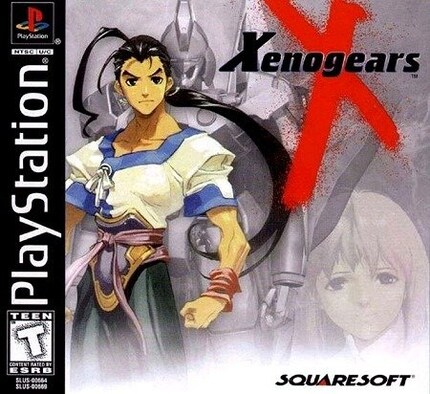
But why did the powers that be nevertheless decide against it? We can only guess. Perhaps the story, drawing on ideas posed by Friedrich Nietzsche, Sigmund Freud, Jacques Lacan and Carl Jung, was too mature for a «Final Fantasy» title. Perhaps it was also due to the narrative style, which was unusual for the time: instead of an overarching story, characters determine the plot.
Fortunately, those responsible at Squaresoft recognised the potential of «Xenogears». Initially conceived as a sequel to «Chrono Trigger», Squaresoft had Takahashi develop a new game.
The story centres on Fei Fong Wong, who suffers from amnesia. His memories only go back three years. At game start, he lives in the tranquil village of Lahan. However, this calm doesn’t last long. A local incident has him mounting a Gear, an oversized robot common in mecha anime. In the process, he loses control and destroys the village. And is promptly banished.
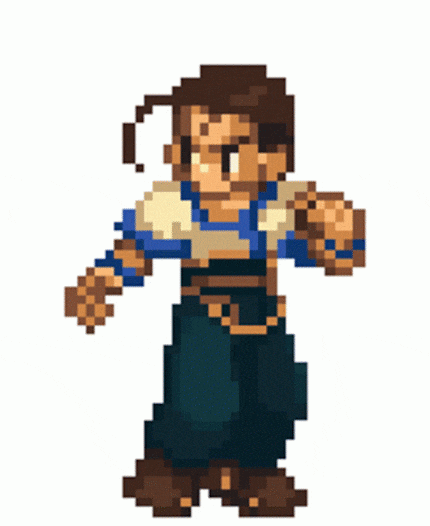
After this run of bad luck, Fei doesn’t want to fight any more. Soon, however, he meets others who claim to know his past. He makes friends, and just like that, the party is involved in a war. All but two playable characters – Rico and Chu-Chu – are given plenty of time to reveal their personal histories and development. Their behaviour is always rational and well explained. Over the course of about 50 hours of gameplay, it becomes apparent that history is always repeating itself and the group is involved in world-spanning events.
If you’re interested in a detailed plot summary of «Xenogears», the best thing to do is watch this video:
«Xenogears» uses many role-playing elements typical for Squaresoft titles of the time. The Active Time Battle system adds a breath of fresh air to turn-based combat, but «Xenogears» implements some features unique to martial arts-focused combat. The combat system in human versus Gear mode differs slightly and provides some variety.
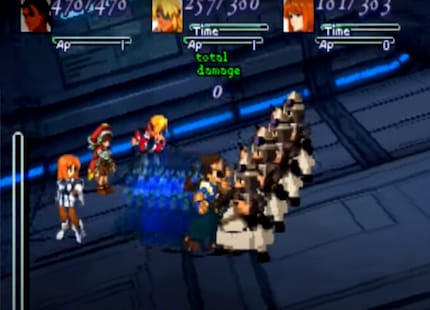
The game contains fully animated cutscenes. «Xenogears» also differs from other titles of the time in other areas. Instead of pre-rendered backgrounds and polygonal characters, the title relies on polygonal backgrounds and pre-rendered characters. So exactly the opposite approach used in «Final Fantasy 7», which was developed at the same time. In-game, the camera can be rotated 360 degrees. This isn’t perfectly optimised and causes a lot of frustration in certain sections of the game.
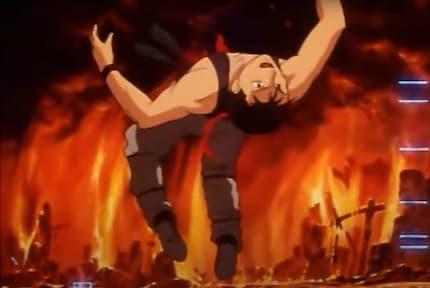
Quite a few fans of the game think that the anime «Neon Genesis Evangelion» was the inspiration for «Xenogears». Fei’s initial reluctance to fight and problems with his father do point to this. But co-author Soraya Saga has denied the claim several times.
What the two have in common above all are references to Jewish mysticism, their religious symbolism. In «Evangelion», religion is more of a stylistic narrative device. «Xenogears» is critical of religion. «Evangelion» is clearly deconstructionist and a critique of the mecha anime genre and its fans. In «Xenogears», the mechas stand for unity, as is typical for the genre. In «Evangelion», they stand for isolation.
There’s also a focus on psychological aspects in both works. «Evangelion,» however, is a commentary on the genre, its fans and the political climate in Japan at the time. From the writer’s perspective, «Evangelion» was also an outlet for depression and isolation. «Xenogears,» on the other hand, puts a greater focus on religion, ideologies and the relationship between an individual and society. At its core, it’s about what it means to be human.
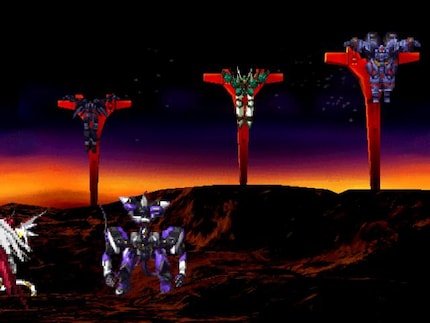
One obvious source of inspiration was the original «Star Wars» trilogy by George Lucas. The character Grahf and his helmet are clearly an homage to Darth Vader. There are other examples, such as when Fei is frozen akin to Han Solo, or a story laid out over multiple episodes. Besides these allusions, however, the style and themes in «Xenogears» are more complex and mature than in George Lucas’ fairy tale.
The game shows what happens psychologically to people when they’re tortured by their mothers or sexually abused as children by religious leaders. This latter fact led the US localisation to refer to the church not as such, but as Ethos. Those responsible were afraid that the game would be boycotted by religious groups. The fact that most topics are nevertheless treated as they are in the original Japanese version is thanks to the translator, who carefully reworded certain things. Otherwise, «Xenogears» probably wouldn’t have been released in the US.
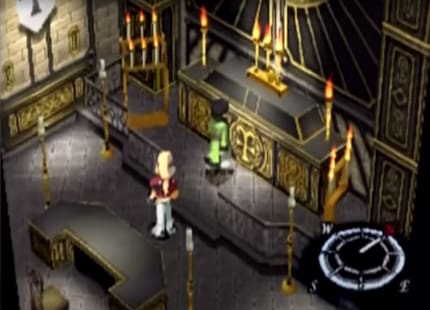
But it wasn’t only the US release that was on a knife edge. «Xenogears» having anything akin to an ending at all is only thanks to Takahashi. Deadlines, new and particularly inexperienced staff, a low budget and the ever-growing story were a huge problem in the development of «Xenogears».
Takahashi himself said that the young team in particular was overwhelmed with the task, developing a 3D game for the first time to make matters worse. They wouldn’t have been able to meet the deadline for the game in the way Takahashi envisioned.
The people in charge at Squaresoft wouldn’t extend the deadline for the game either. Their suggestion: Takahashi should finish the game after the first CD-ROM. This would’ve ended the game with a huge cliffhanger. Since it wasn’t certain that he’d be able to make a sequel, Takahashi decided on a dramatic move: he packed a lot more story onto the second CD than was intended.
Instead of a game in the true sense, the second CD is a kind of text JPRG. The characters sit on chairs in front of a primarily black background with images superimposed and continue to tell the story. So there’s a hell of a lot to read. Interspersed by the odd boss fight or a dungeon. Takahashi was able to at least finish telling the story that way.
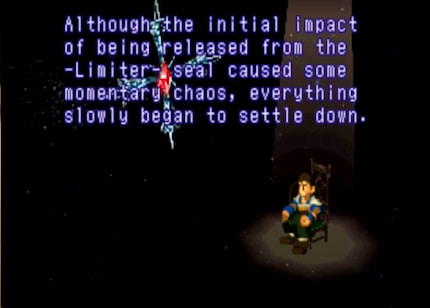
However, «Xenogears» would’ve been far from over with just Fei and his comrades-in-arms. During development, Takahashi conceived a story in three parts. The first is set 15,000 years before the in-game events. The second is the game itself, and the third deals with what comes after.
Part 2 can again be divided into four sub-episodes. In the credits, «Xenogears» calls this Episode five. Takahashi originally planned to release episodes two through four in various formats such as novels or other games. However, this never came to be. He therefore integrated them into episode five as flashbacks – justifying Takahashi’s decision to design the second disc almost entirely as a text JRPG, in retrospect. This way, some fragments of episodes two through four were at least present. Even though the plot-heavy second disc turned off many players, story-wise it’s a masterpiece for the time.
«Xenogears,» then, wouldn’t have remained a simple story about a soldier with multiple personalities on some random planet. It would’ve become an all-encompassing space opera. Unfortunately, this never came about. It would remain a one-and-done.
Takahashi left Squaresoft following the game and founded Monolith Soft. Games such as the three-part «Xenosaga» series and «Xenoblade Chronicles», the third part of which was released last month, were crafted there.
If you want to check out the complete story of «Xenogears», you can do so with this playlist, containing all the game’s cutscenes.
From big data to big brother, Cyborgs to Sci-Fi. All aspects of technology and society fascinate me.
Interesting facts about products, behind-the-scenes looks at manufacturers and deep-dives on interesting people.
Show all
Background information
by Cassie Mammone

Background information
by Philipp Rüegg

Background information
by Philipp Rüegg